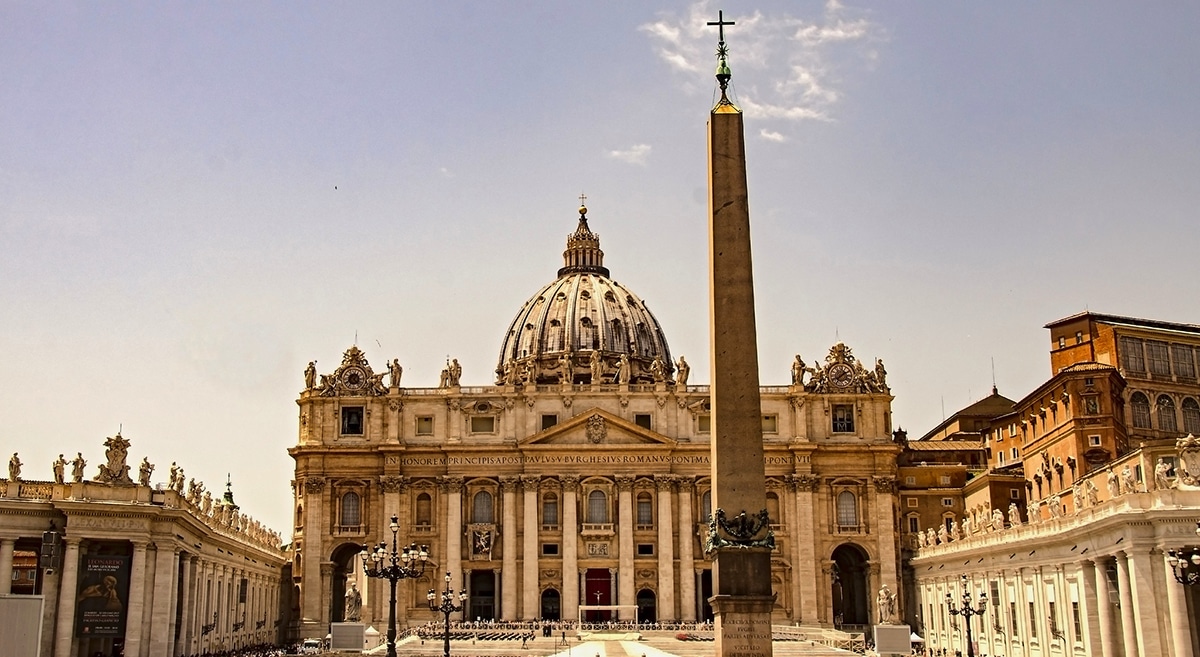
Surely you know some other basilica. They are very important religious buildings, which is why they are usually a point of tourist interest. But do you really know what a basilica is? How is it different from a cathedral? Both buildings are very similar, but they are not the same.
In this article we will explain what a basilica is and what its function is. In addition, so that we cannot be confused with a cathedral or a church, we will also comment how is it different from these two buildings. If you want to know more about these imposing structures, I recommend that you keep reading.
What function does a basilica have?

Before talking about its function, we will first explain what a basilica is. This term comes from Latin and Greek and translates as "royal" or "royal". It is actually an ellipsis of the Greek expression βασιλική οἰκία (basiliké oikia) which means "royal house". Its name already suggests that it is a very sumptuous building from Greece and Rome. The basilicas were public and used to be used for courts. In addition, they occupied an important place in the forum of Roman cities.
However, that was not the only function performed by these majestic buildings. The Roman basilicas had multiple uses that we will list below:
- Meeting place for citizens to deal with various community issues
- Market
- Cult place
- Justice administration
- Place of financial transactions
At an architectural level, the basilicas were large, rectangular rooms and were made up of one or more naves, but always with an odd number. In the event that there was more than one nave, the central one was always the tallest and widest and had several columns to support it. To illuminate the room, they took advantage of the difference in height by opening holes in the highest part of the walls. Normally an apse or an exedra was found at one of the ends belonging to the main nave. The presidency used to be installed there. At the opposite end was the entrance through a portico.
Later in history, when Christianity arose in the fourth century, Christians took advantage of many Roman buildings to establish an official religious site there, in order to celebrate the liturgy. Among these buildings were also the basilicas. Once the Roman Empire officially converted to Christianity, The term "basilica" began to be used to refer to important and large churches that had certain privileges of worship and special rites. So we can talk about these buildings giving them a religious or architectural approach.
What is needed for a church to be a basilica?
Now that we know what a basilica is and what its function is, let's see what makes it officially become such a remarkable church. Although it is true that they were built long before Christianity arose, these buildings are considered churches. But what is the difference? In order for an ordinary church to be considered a basilica, it must receive that honorary title. The Pope himself is responsible for this. However, for him to grant her such an honor, the church must meet at least one of these three conditions:
- Possess unique relics of remarkable importance.
- Being an important pilgrimage destination attended by many faithful.
- Have a high architectural value.
Since the basilicas have a rather peculiar relationship with the supreme pontiff and the Chair of Rome, all of them have permission to possess their own coat of arms and display the pontifical insignia. These shields have the following exterior ornaments:
- Basilica emblem with the traditional insignia of the Popes: They are the keys of gold and silver that intersect. They represent the keys of the Kingdom.
- The pavilion: The conopeo identifies the vacant apostolic see and the basilicas. Normally it has the traditional papal colors, which would be gold and deep red. In this way the connection of that building with the Holy See is reflected.
- Temple motto: It is located under the shield, in a displayed badge.
What is the difference between a cathedral and a basilica?

It is not uncommon to be confused with some religious buildings as imposing as basilicas or cathedrals. Although they are very similar, there is a very big difference in terms of the importance of both. Both the basilica and the cathedral are churches. But what exactly is a church? This term can be defined in two ways. One would be the congregation made up of Christians, and the other would be the building dedicated to divine worship. Within this second definition we can find different types of churches, such as the basilica and the cathedral, whose difference lies mainly in their importance.
As we have already mentioned above, basilicas are built long before Christianity emerged. These large and strikingly designed buildings are used today mainly to transmit religion, but in ancient times, the Greeks and Romans used them as a court. From the fourth century, after the birth of Christianity, they are considered special churches to which the Pope has granted the honorary title of basilica, fulfilling at least one of the requirements that we have listed in the previous section.
Now we only have one question left to answer: What is a cathedral? This type of building is found all over the world and the dimensions and architectural forms vary widely. Unlike basilicas, the oldest known cathedrals date back to the rise of Christianity. However, the main difference between both types of churches is that the basilica is by an honorary title, while the cathedral contains the chair or seat of the bishop of the respective diocese. So we could say that it is the main Christian church in the area.
With all this information I hope I have clarified what a basilica is and how it differs from a cathedral. Without a doubt, they are extremely beautiful and impressive buildings that are worth visiting, if we have the chance.